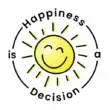We live in a world where we’re told that more is always better: more clothes, more gadgets, more subscriptions, more of everything. Yet so many of us feel weighed down, not lifted up, by all the stuff we’ve accumulated. The cupboards groan, the garage is packed, and our minds aren’t far behind.
Minimalism offers an antidote to this overwhelm. It’s not about living in a bare white room with one chair and a single mug (unless that’s your thing). It’s about being deliberate—choosing less clutter so we can have more clarity, more freedom, and ultimately, more happiness.
Why Less Really Is More
Psychologists have found that clutter increases stress and reduces focus. When we’re surrounded by piles of things we don’t need or even want, our brains interpret it as unfinished business. The “shoulds” pile up: I should read that, fix that, use that, wear that someday. No wonder we feel drained.
Minimalism flips the script. Instead of asking, What can I get? it asks, What can I let go of? This simple shift opens space—not just in our homes, but in our heads and hearts.
If you want the science behind it, research has shown that minimalism is linked with higher levels of wellbeing and lower depression (ScienceDirect study) and gives people a sense of autonomy, mental space, and freedom (Springer research).
The Link Between Minimalism and Happiness
- Clarity of Mind – Fewer distractions mean more focus on what matters most.
- Financial Freedom – Spending less on “stuff” means more money for experiences or savings.
- Time Back – Less cleaning, organising, and shopping equals more time for living.
- Stronger Relationships – When we stop chasing possessions, we make more room for people.
- Gratitude and Presence – Appreciating what we do have fosters deeper contentment.
Want more? Here’s a plain-English summary of current research: Can minimalism really make you happier?.
KonMari vs Minimalism
Minimalism and the KonMari method often get bundled together, but they aren’t the same thing.
- Minimalism is about reducing possessions to the essentials, creating simplicity, and freeing up space—both physical and mental. Its focus is on intentional living and removing excess to highlight what truly matters.
- KonMari isn’t about quantity; it’s about quality of connection. Marie Kondo asks us to keep anything that “sparks joy,” regardless of how much or how little we own. You could have a minimalist’s capsule wardrobe, or you could keep 50 teapots if they genuinely delight you.
In short: minimalism asks “How little do I need?” while KonMari asks “Does this bring me joy?” Both approaches lead to more mindful living, but they take different paths to get there. If you’d like to learn more about her philosophy, check out the official KonMari website or this article on why KonMari is not minimalism.
How to Start (Without Throwing Everything Out)
Minimalism doesn’t have to be extreme. You don’t need to pack a single backpack and live like a monk. Here are three gentle ways to begin:
- The One-In, One-Out Rule: Every time you bring something new into your home, let something else go.
- 10-Minute Declutters: Set a timer and tackle one drawer, one shelf, one little corner at a time.
- Ask the Happiness Question: Before buying something, pause and ask, Will this add lasting joy to my life—or is it just another dust collector?
More Life, Not Less
Minimalism isn’t about deprivation—it’s about liberation. By reducing the physical and mental clutter, we give ourselves room to breathe, to grow, and to live more fully.
Happiness, at its core, isn’t found in the size of our wardrobes or the gadgets on our shelves. It’s found in the quiet satisfaction of living in alignment with what we truly value. And often, that means less stuff and more life.
Your turn: What’s one thing you could let go of this week to make more room for happiness?
- Breaking Big Goals Into Small Steps: The Key to Actually Achieving Them - November 4, 2025
- Accountability and Reflection: The Secret Sauce of Goal Achievement - October 28, 2025
- How to Find Your Core Values (and Why They Matter for Goal Setting) - October 14, 2025




